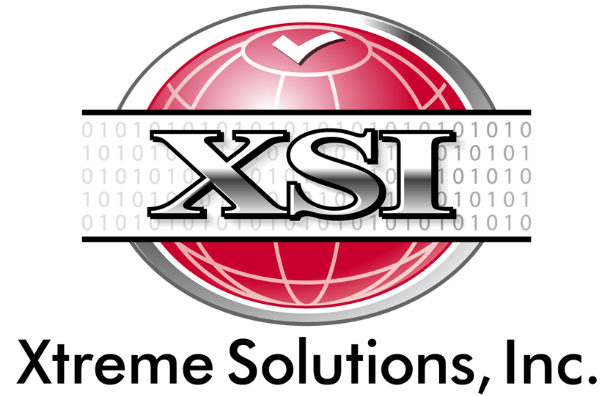Brand Contributor
The Business Intelligence industry has long promised a future where every worker can use data to make smarter business decisions. Although that promise continues to be out of reach for most companies, the industry has come a long way over the past few decades, and we believe we are on the cusp of a new generation of BI that will finally turn that promise into reality.
We started with “Gen One” BI – on-premises data and heavy-IT driven reporting projects – which was burdensome for both IT teams and end users. While cumbersome and requiring heavy investments, a few enterprises overcame those hurdles and reaped big benefits, lighting the spark for analytics.
Next, we entered the era of data democratization and self-service, or “Gen Two” BI, which focused on making data more consumable, easy to use and accessible by putting the power of analytics tools into the hands of business users. Although more organizations adopted Gen Two BI and gave out more licenses than ever, this generation’s fundamental flaw was its focus on dashboards and analytics itself. We asked business users to also become analysts, to step out of their daily workflows to build or find dashboards to leverage data. The result is that adoption of data analytics continues to be a struggle as data volume and complexity grows, with only 24% of firms claiming to have created a data-driven organization, an actual decline from prior years!
It is time for a third generation of BI. Like the iPhone, which built on two generations of cell phones and smartphones and finally put mobile technology into the hands of every consumer, this new generation of BI will take the best of the two previous generations and finally empower every worker to make smart, data-driven decisions.
This will be “Gen Three” BI, and we call it: the Age of Action.
What does it look like?
Analytics that come to us
Business intelligence is built on an old data culture that relies on technical experts. In the early days of reporting, those experts were called IT. As technology evolved and tools became easier, the progression of BI moved to reports and dashboards delivered by new experts—analysts. This made analytics more accessible, but still didn’t make self-service data insights a reality across the business. Here’s why: Instead of using technology to put data in front of people where they already are working, we continue to ask people to leave their business apps and turn to dedicated tools or dashboards for answers.
This process is disruptive and inefficient, and often causes users to write it off completely. Dashboards don’t have built-in analytics processes; they share information but do not provide recommended courses of action at the right moment or in a decision maker’s workflow. Business professionals want exactly that: They want a final answer and recommendations on what to do next. They would rather have data and actionable insights come in easily digestible bites versus needing to dig for answers in dashboards and reports. And the truth is they are digging; dashboards are often too broad to address multiple questions, too difficult to customize, and frankly, have too many insights.
For analytics to advance, we must extend dashboards or deliver personalized intelligence to more decision makers . In fact, Gartner predicts that “dashboards will be replaced with automated, conversational, mobile and dynamically generated insights customized to a user’s needs and delivered to their point of consumption. This shifts the insight knowledge from a handful of data experts to anyone in the organization.” Now, instead of wasting time jumping from where the data resides (in dashboards) to where work is done, embedded analytics enables users to do both simultaneously: get insights and take action.
Analytics must come to us.
The technology to be invisible and everywhere
The keyword in Gartner’s prediction above is automation. We cannot talk about moving beyond the dashboard without acknowledging the role that artificial intelligence plays in this next phase of analytics. Advancements in AI means we can now scan entire data warehouses in seconds, answer the toughest analytical questions and track meaningful changes in data in real time. And we can do all this without lifting a finger or calling in experts.
Previous generations of BI gave us technology like data visualization to make data more understandable, the cloud to enable access from anywhere or any device, and extensible frameworks so we can embed data into other applications. Today, when we combine that technology with AI, we can extract data insights and embed them into our CRM, workplace collaboration apps, custom business apps, etc. Instead of asking users to pause their jobs and dig through dashboards for answers, we can put digestible insights and expert knowledge in the apps they are already using.
In this type of world, technology fades into the background. Business workers are in and out of their apps and barely aware that they’re using analytics at all. They’re simply getting the answers they need, making smarter decisions and moving on to the next task. Taking action based on data becomes seamless, automatic and instinctive for all.
The end result: Analytics in all decisions
Psychologists estimate that we make an average of 35,000 decisions each day. As consumers, we make many of those decisions with the help of data analytics, even if we don’t realize it. We turn to our smart devices for insights about traffic patterns, exercise goals, financial spending habits, and more. Often, those insights come to us automatically in our apps, and sometimes in advance before we know we need it. As a result, we make better-informed decisions, thanks to personalized data.
This is how decision-making should be in businesses too. Every day, our employees, partners and customers also make decisions that impact the bottom line; why wouldn’t we expect the same level of insight in the workplace? In the Age of Action, insights arising from analytics and AI are no longer a luxury, but a necessity for achieving competitive advantages, whether in employee- or customer-facing apps and workflows.
Many businesses are already taking advantage of this new generation of BI. Take GE for example, which embeds analytics into their scheduling software for more than 150 hospitals, helping them predict no shows and cancellations for MRI and CT scans.
Or Air Canada, which has hundreds of gigabytes of data on safety-related KPIs. They’ve integrated AI and analytics into corporate safety processes for their front-line employees so airplane parts can be flagged and replaced before the part fails.
Or non-profit software company Tessitura Network, which during COVID-19, served data insights to more than 650 performing arts and cultural organizations through APIs so they could improve fundraising, analyze capacity, and manage canceled events.
This is what business intelligence promised decades ago. It’s businesses of all sizes and types, putting personalized, actionable analytics in the hands of all users where they are. No more heavy IT projects with long turnaround times. No more distracting dashboards or attempts to turn everybody into analysts.
“Let’s look at the data” will become a phrase of the past. The data will already be where business workers want it, when they want it, without them asking for it. They will have their insights, they will make the decisions they need to and then they will move on.
Welcome to the Age of Action.

